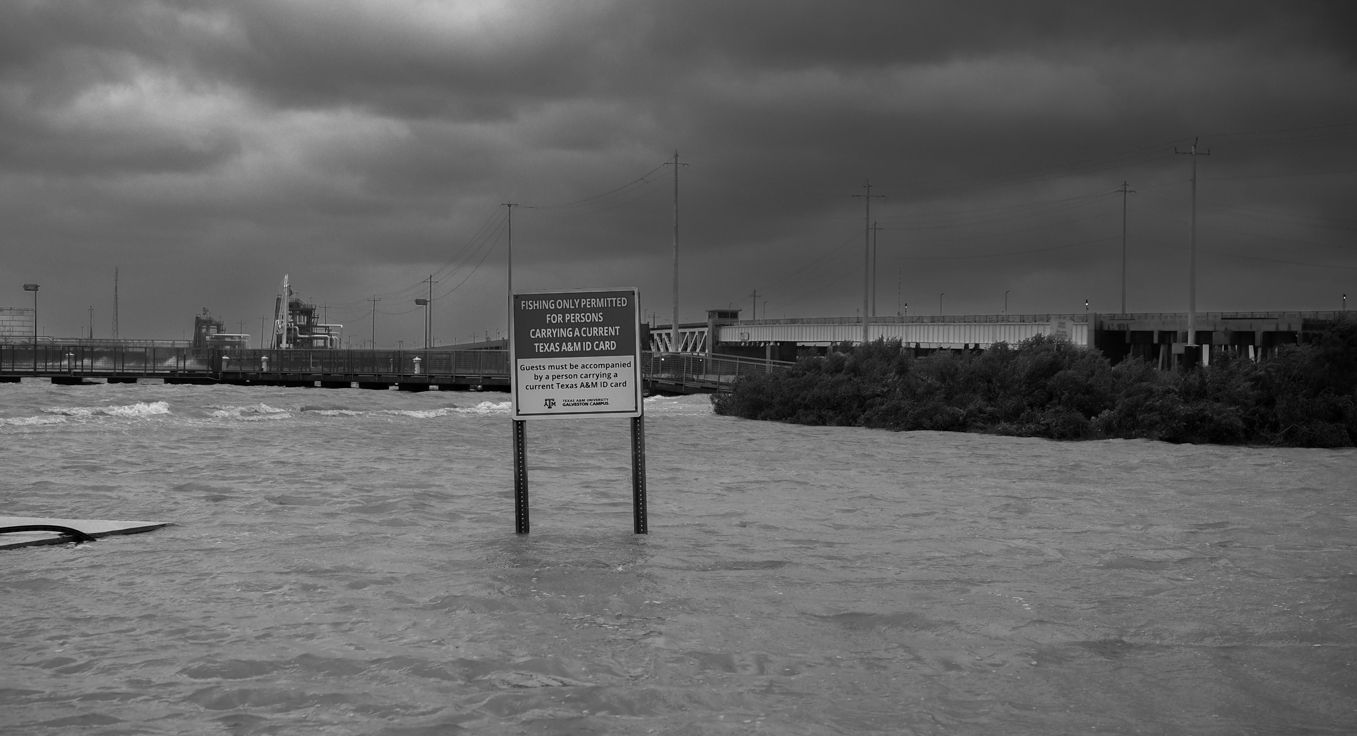How Hurricane Beryl affected students on campus
By Sean Chavez ‘24
Tweet
Editorial Note: This story was originally supposed to appear in the Sept. 18 print issue.
Over the summer, on July 8, Hurricane Beryl landed on the Texas coast, beginning in Matagorda County, between Lake Jackson and Port Lavaca and Matagorda. The hurricane then went up the coast, ending in Galveston County.
After the hurricane made landfall in Galveston County, the hurricane brought damaging winds and excess rain, raising the water level and causing mass flooding.
On Pelican Island, when the hurricane made landfall, the campus buildings survived the detrimental winds while they knocked out power for the campus. Conversely, with the water level already being high in certain areas off campus, the addition of the extra rain brought the water level up and over in specific areas such as the small boat basin, which was most pronounced with water brought much farther in from the edge of the dock and the island next to the lifeboat being almost completely submerged. At Shell Beach, the water was on the precipice of reaching the sidewalk near PMEC. After the shock and awe of the storm, power was intermittent on campus, with most buildings without power.
During the hurricane, Sea Camp continued to operate, with parents gradually withdrawing their children from the program. This dynamic presented an interesting experience for the children, who had to face the potential reality that their home situations might be more severe than the conditions that they were experiencing at TAMUG.
As the week went on, with landfall being Sunday, what mainly impacted the campus was being without power. The most significant areas on campus that were affected were the dorms.
During this time, sea camp residents were housed in Pacific Hall and summer school students in Albatross Hall. Also, Albatross Hall was without water for periods of time since the pumps used electricity and eventually couldn't drain as they were without power. The humidity affected the other dorms, such as TAMMAH hall, increasing potential for mold/mildew. To pass the time while we were without power, we spent most of our time in the waterfront Pavillion.
Arriving at the end of the week, the university had brokered a deal with Galveston Community College to house summer school students in their housing as that part of the island was with power and Pelican Island was still without power. The housing coordinators assigned rooms and issued keys on Thursday, with the evening arrival time at housing. Once the students were checked in, power was restored to the university that Thursday night.
The following day, housing personnel conducted walk-throughs to see if there were any issues with systems returning online and to assess any damage from stagnant humidity living in empty rooms.
After the walk-throughs had been finished, the students could return that evening.
![]()
More:
Lifestyle & Arts